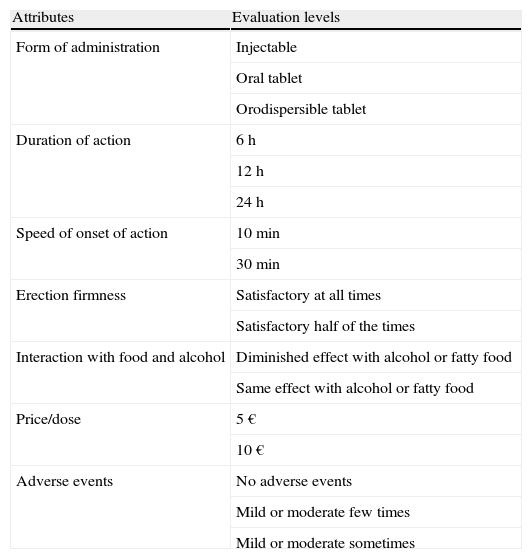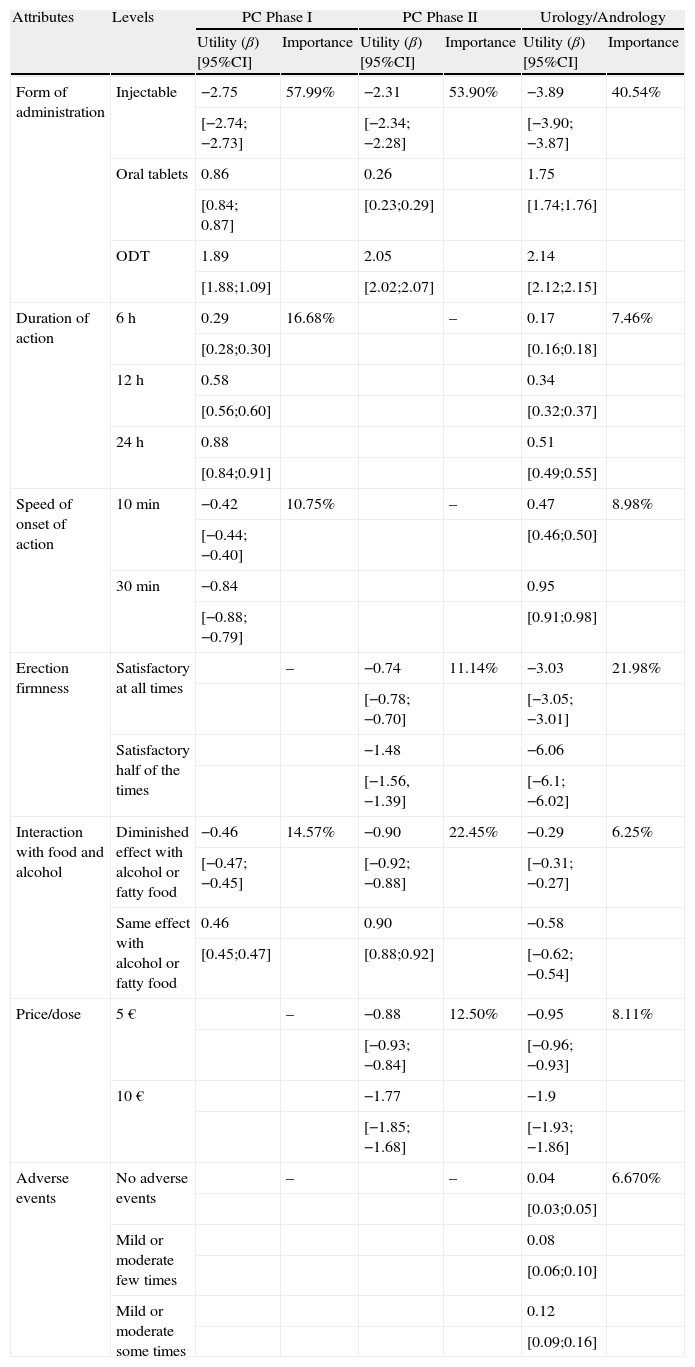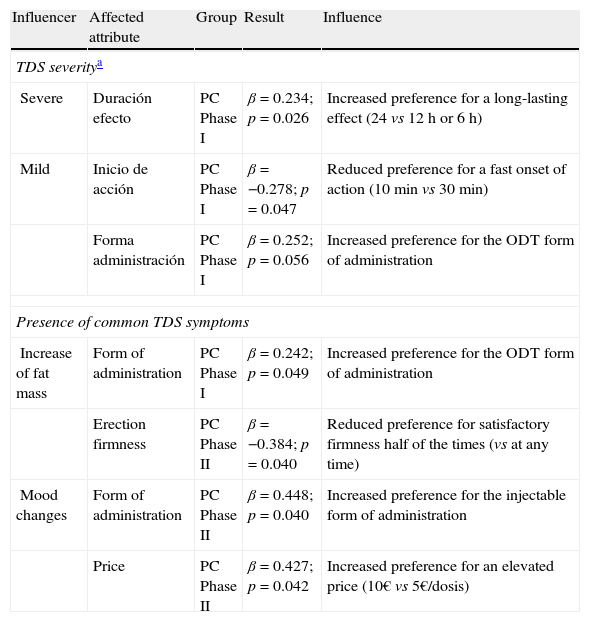Patient preference for erectile dysfunction (ED) treatments is of great importance for satisfaction and adherence. We have assessed the usefulness of the main technique for assessing consumer preferences (conjoint analysis) to analyze preferences towards these treatments. We also assessed the influence of age, frequency of sexual intercourse, co-morbidities, ED severity or having testosterone deficiency syndrome (TDS).
Materials and methodsObservational, cross-sectional, multicenter study in 626 men aged ≥18 years who had recently taken at least two different PDE5i, one being vardenafil orodispersible (ODT). Seven selected features of ED treatments were tested. Different series of scenarios (cards) were created by combining these features: two series of 4 features (9 cards), another one series of 7 (16 cards). Short series were tested in Primary Care, and the long series in Urology/Andrology offices. Influences were tested by rank ordered logistic regression analysis.
ResultsThe feature «administration form» was consistently given the most relative importance; the ODT form was given the greatest utility. Consensus towards the most and least preferred treatment was achieved only in one of the short series tested. Only severity of TDS symptoms, or having the most frequent symptoms, influenced treatment preference. Influence was mild.
ConclusionsConjoint analysis is a valid method for assessing preferences for ED treatments. A short series of highly selected attributes is advisable. Easiness and convenience of administration are of great importance for users. TDS symptomatology mildly affects preference.
La preferencia hacia medicamentos para la disfunción eréctil (DE) es fundamental para la satisfacción y la adherencia. Analizamos la utilidad de la principal técnica de estimación de preferencias en consumidores (análisis conjunto) para valorar la preferencia hacia estos tratamientos y analizamos la influencia de la edad, la frecuencia de relaciones sexuales, las comorbilidades, la gravedad de la DE y la presencia de síndrome de déficit de testosterona (SDT).
Material y métodoEstudio observacional, transversal, multicéntrico en 626 varones con edad≥18 años que tomaron al menos 2 iPDE5 diferentes recientemente, uno de ellos vardenafilo bucodispersable. Se valoraron 7 atributos de tratamientos para DE seleccionados. Se crearon escenarios (cartas) con combinaciones de atributos: 2 series contenían 4 atributos (9 cartas), otra 7 (16 cartas). Las series cortas se testaron en atención primaria, la larga en urología/andrología. La influencia sobre las preferencias se analizó mediante regresión logística de rangos ordenados.
ResultadosLa forma de administración fue consistentemente el atributo con mayor importancia relativa y la forma bucodispersable el de mayor utilidad. Solo una serie corta logró un consenso hacia la combinación preferida y no preferida. Únicamente la gravedad de los síntomas del SDT, o la presencia de los más frecuentes, afectó levemente a la preferencia.
ConclusionesEl análisis conjunto es válido para el análisis de preferencias hacia tratamientos para la DE. Es necesaria una serie corta de atributos muy seleccionados. La facilidad y comodidad de administración son de gran importancia para los usuarios. La sintomatología del SDT afecta levemente a las preferencias.










